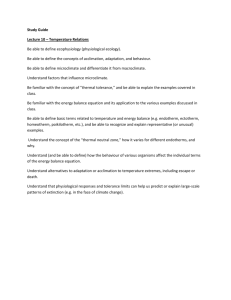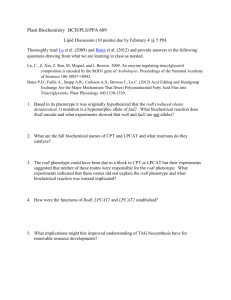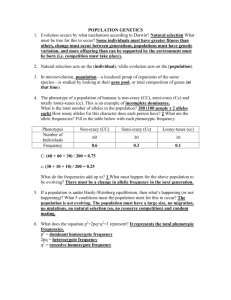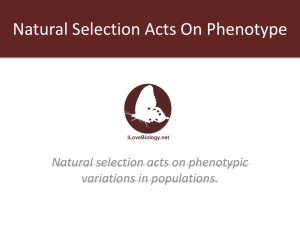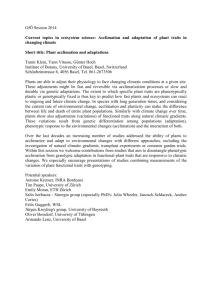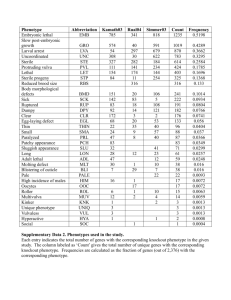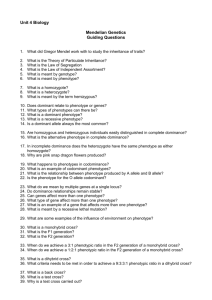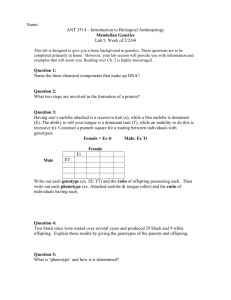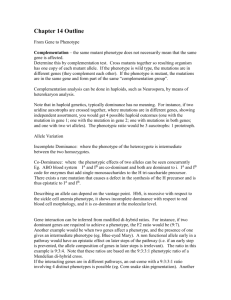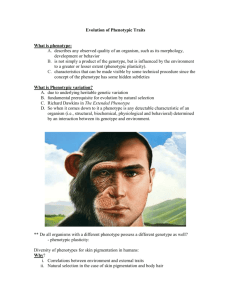06 Lecture Ch 09
advertisement
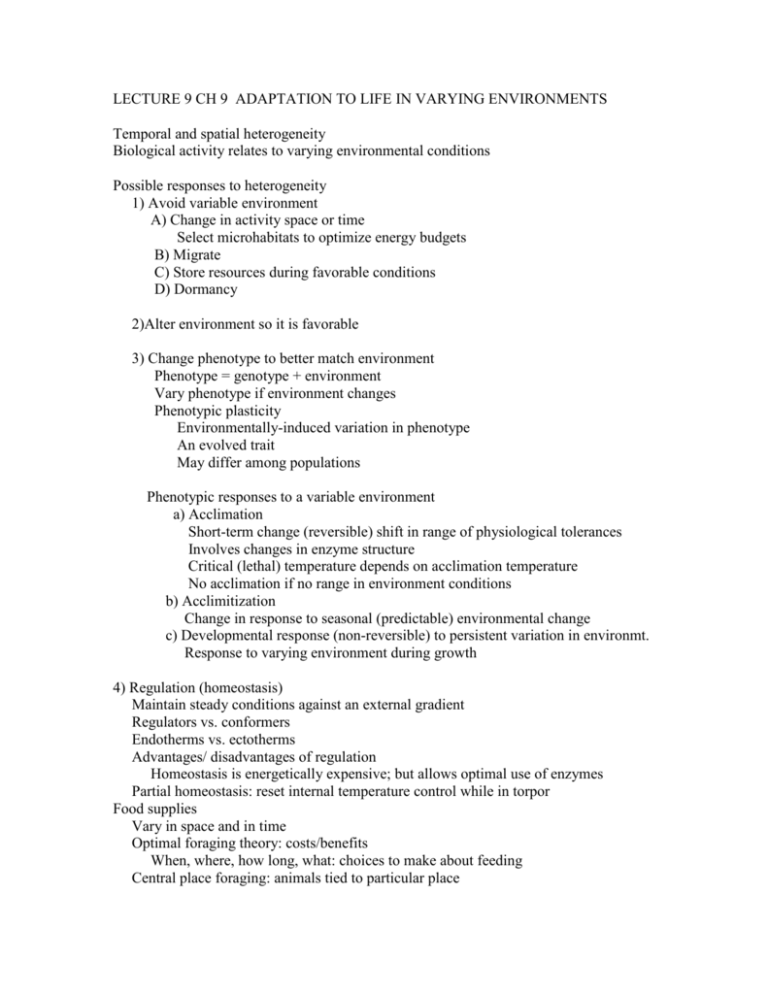
LECTURE 9 CH 9 ADAPTATION TO LIFE IN VARYING ENVIRONMENTS Temporal and spatial heterogeneity Biological activity relates to varying environmental conditions Possible responses to heterogeneity 1) Avoid variable environment A) Change in activity space or time Select microhabitats to optimize energy budgets B) Migrate C) Store resources during favorable conditions D) Dormancy 2)Alter environment so it is favorable 3) Change phenotype to better match environment Phenotype = genotype + environment Vary phenotype if environment changes Phenotypic plasticity Environmentally-induced variation in phenotype An evolved trait May differ among populations Phenotypic responses to a variable environment a) Acclimation Short-term change (reversible) shift in range of physiological tolerances Involves changes in enzyme structure Critical (lethal) temperature depends on acclimation temperature No acclimation if no range in environment conditions b) Acclimitization Change in response to seasonal (predictable) environmental change c) Developmental response (non-reversible) to persistent variation in environmt. Response to varying environment during growth 4) Regulation (homeostasis) Maintain steady conditions against an external gradient Regulators vs. conformers Endotherms vs. ectotherms Advantages/ disadvantages of regulation Homeostasis is energetically expensive; but allows optimal use of enzymes Partial homeostasis: reset internal temperature control while in torpor Food supplies Vary in space and in time Optimal foraging theory: costs/benefits When, where, how long, what: choices to make about feeding Central place foraging: animals tied to particular place Risk-sensitive foraging: value of feeding area reduced by risks (e.g. predation) Prey choice Prey quality varies Consume a mixed diet Complementarity of amino acids Avoid large doses of plant toxins
